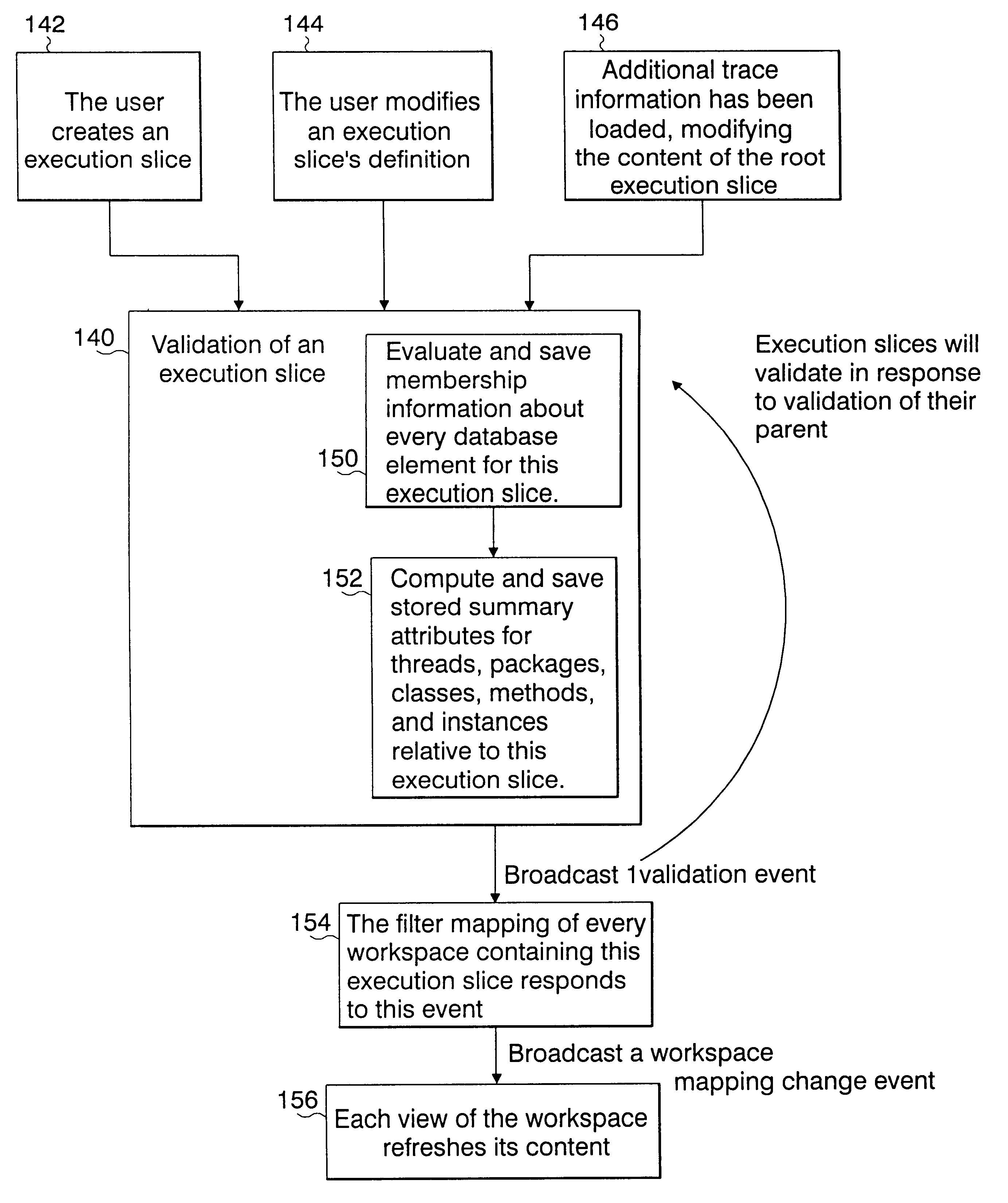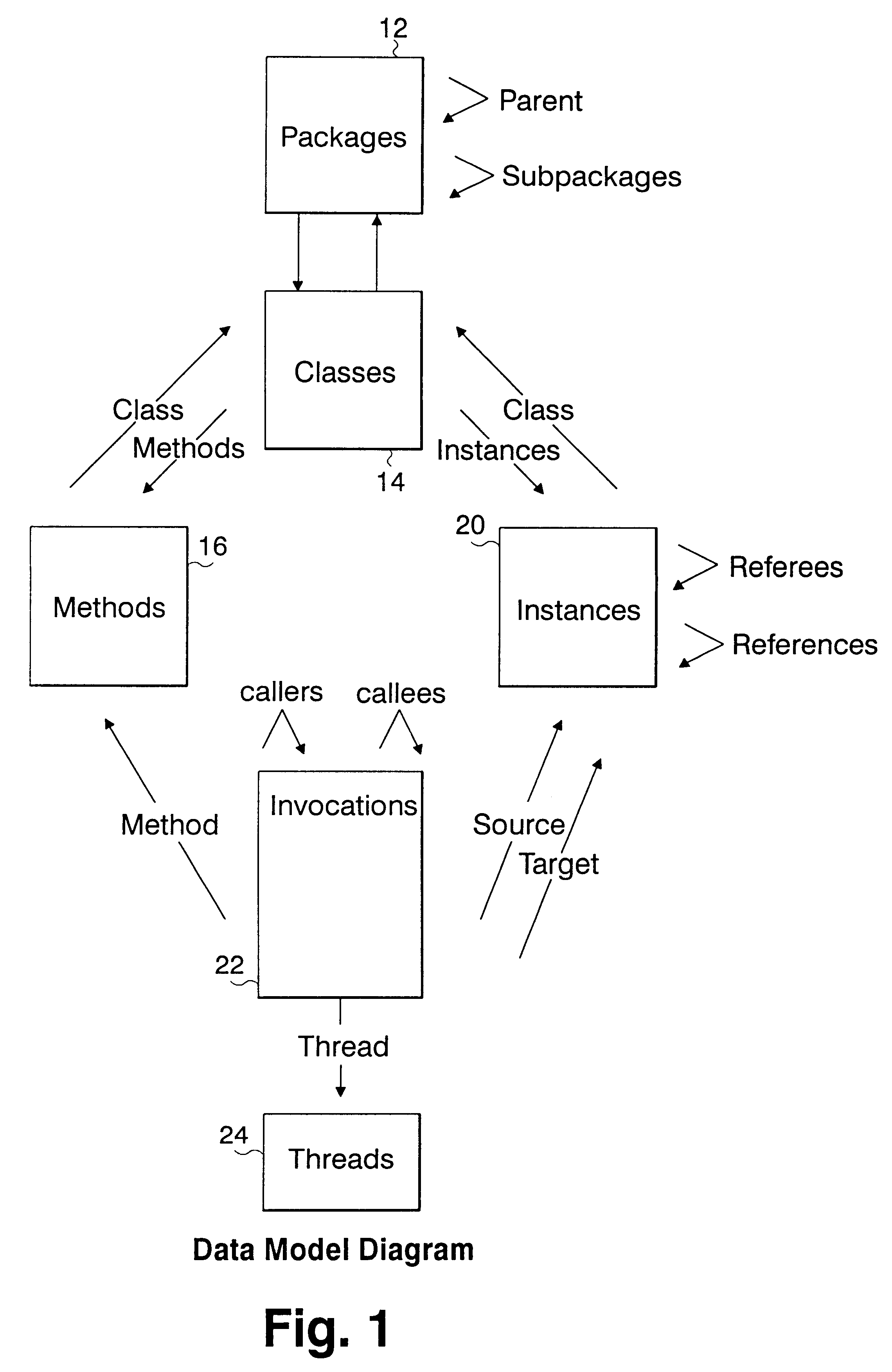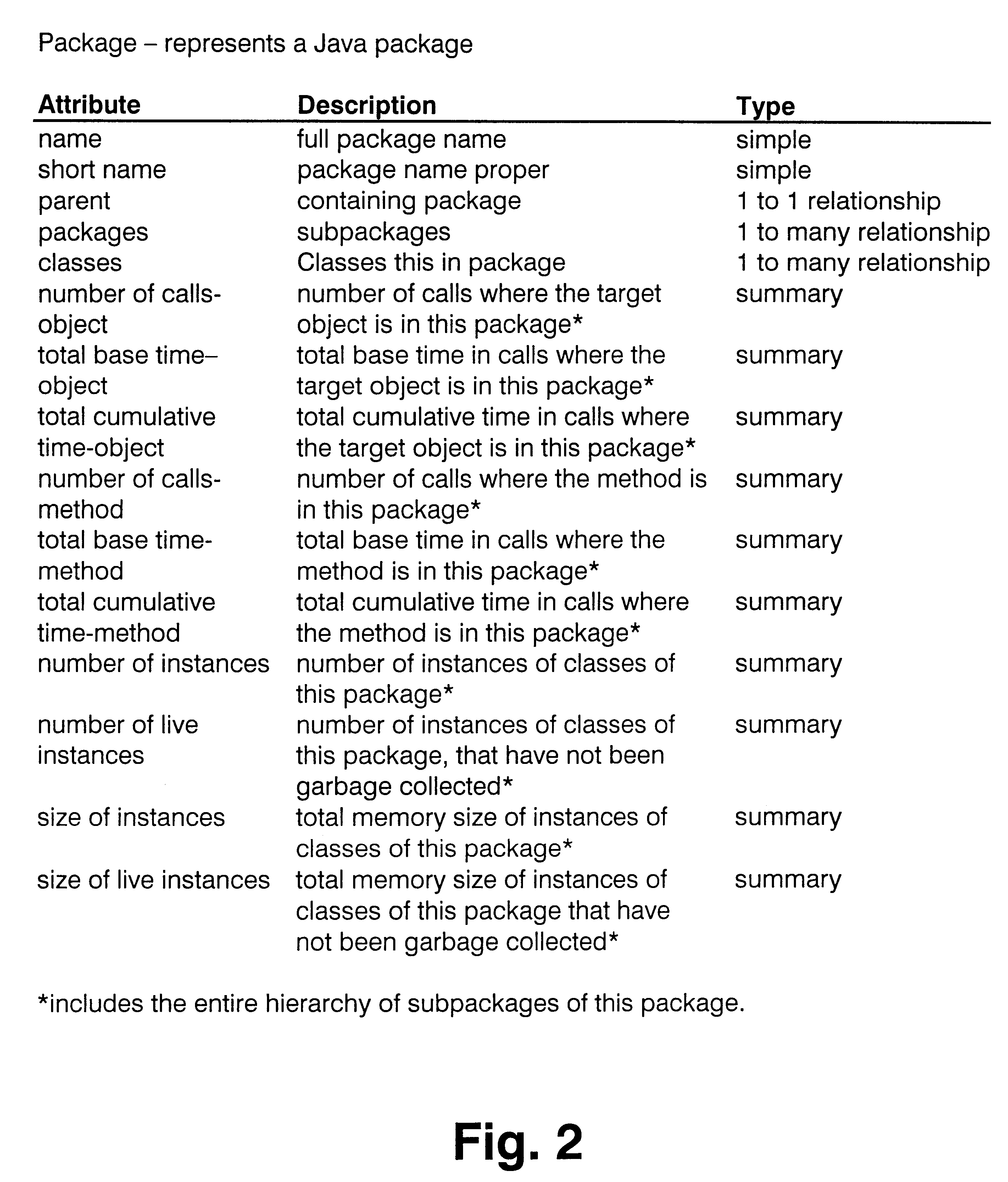Methods for analyzing dynamic program behavior using user-defined classifications of an execution trace
a dynamic program and execution trace technology, applied in the field of methods for analyzing the execution behavior of software programs, can solve the problems of program behavior as it runs, program behavior can be difficult to predict, programs often run incorrectly, and use more system resources than a programmer expected, etc., to achieve the task of analyzing the behavior of the program as it runs, and is difficult even for the most experienced programmer
- Summary
- Abstract
- Description
- Claims
- Application Information
AI Technical Summary
Problems solved by technology
Method used
Image
Examples
Embodiment Construction
: Usage
Slice Specification Techniques
We provide various techniques for specifying execution slices, with the goal of allowing the user great flexibility in their definition in a way that is easy to use for common analysis tasks. Execution slices are defined by a combination of filtering queries and recasting rules. The recasting rules take the place of potentially complex query criteria for the most common cases. This is particularly important since a single execution slice will span all types of information (i.e. all the entities) in the database. The recasting rules help the user study different types of information as they pertain to the execution slice without having to restate the query criteria over each type of information.
We provide the user a fixed set of predefined recasting rules. When the user first creates an execution slice, a subset of the rules is enabled for that execution slice by default. The user may adjust the specification of the execution slice by enabling or ...
PUM
 Login to View More
Login to View More Abstract
Description
Claims
Application Information
 Login to View More
Login to View More - R&D
- Intellectual Property
- Life Sciences
- Materials
- Tech Scout
- Unparalleled Data Quality
- Higher Quality Content
- 60% Fewer Hallucinations
Browse by: Latest US Patents, China's latest patents, Technical Efficacy Thesaurus, Application Domain, Technology Topic, Popular Technical Reports.
© 2025 PatSnap. All rights reserved.Legal|Privacy policy|Modern Slavery Act Transparency Statement|Sitemap|About US| Contact US: help@patsnap.com



